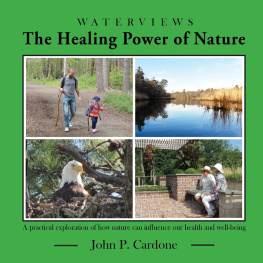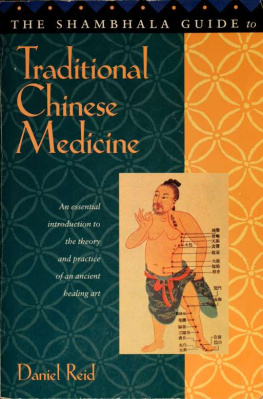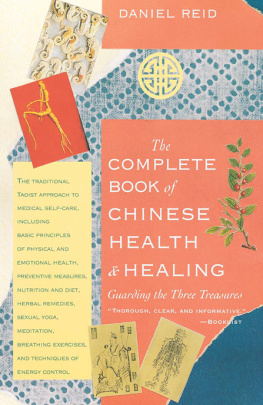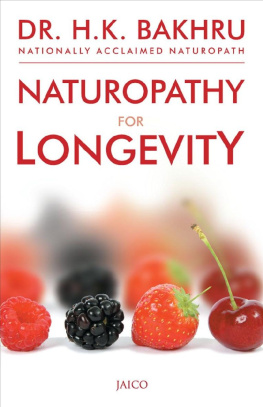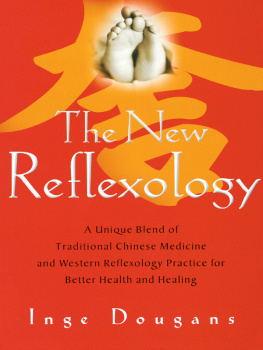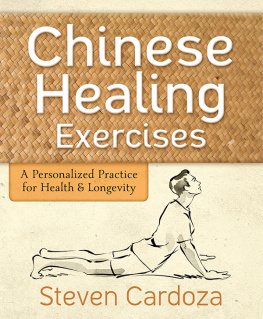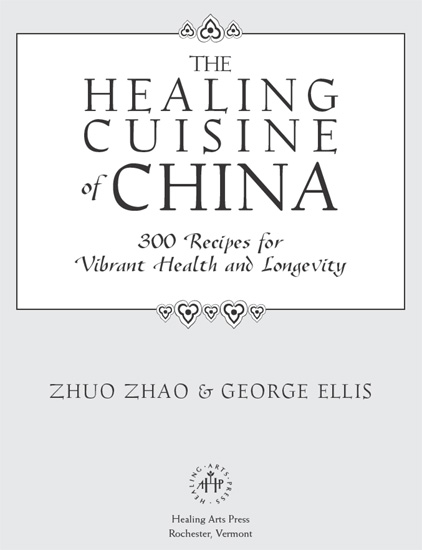

PREFACE

In China we take many facts about food, eating, and health habits for granted. When I first traveled to the United States in 1988, I was intrigued by many of the differences between Chinese and Western culture. Above all I was surprised by the differences in eating habits.
People in America seem to be obsessed with the concept of a healthy diet. Nutrition facts are printed on every jar, can, and package; everything is fat free or low in cholesterol. People seem to know so much about food. They talk about organically grown foods, about fiber and vitamins and health. All this set me thinking about my own Chinese traditions.
When I lived in China I paid very little attention to tradition. Like most young people of my generation, I believed that everything Western was superior and that our Chinese culture was too old-fashioned to take seriously. Nevertheless, without realizing it I was absorbing many of my cultural traditions. In America, therefore, when I heard people rhapsodizing about low-fat vegetarian and New Age diets, I was perplexed. The precious organically grown tomatoes or cucumbers and the cooking methods that people so enthused about appeared to me to be perfectly ordinary. I soon realized that what was considered a normal diet in America must be something quite different from what I was used to.
Indeed, even Chinese food in America turned out to be different from what I expected. While there are thousands of Chinese restaurants in the United States, few of them serve the sort of food we expect to eat in China. In China we combine colors and flavors in ways that please the eyes and the palate. We balance our diet to consume a little of everything in the right combination and sequence: too much meat increases internal fire; too many raw vegetables give you a stomachache.
In China we always consider the health merits of what we eat. We dont like to deep-fry because frying is poison. We eat garlic because garlic cleanses the intestines, destroying harmful microorganisms. We select our foods according to the climate and time of year: when it is very hot, we eat cooling foods; in winter we eat warming foods.
We consume our drinks warmeven water is drunk hot. Hot water dissolves fats, assists digestion, and cures colds. As everybody in China knows, iced water blocks digestion. We drink soup at the end of our meals in order to clean the esophagus. Soup for us is a nutritious preparation in clear broth, nothing heavy or creamy. (Cream, milk, and cheeses have no place in Chinese cuisine.)
We know that you get a stomachache if you eat outdoors facing the wind, that green tea is important for burning fats, and that ginger kills germs.
Confucius said, Ordinary people regard food as heaven. Eating is something that we do every day. The way we eat affects the way we live. Good, healthy cuisine not only improves the quality of our eating; it leads to a healthy body and mind, to harmony, and to a long life. When I stayed several months in America in 1993 I found myself thinking about food and the eating habits of our two cultures more than I had ever before. I decided then that I should write something about health and cuisine.
In my experience writing projects begin with a seed of an idea that makes its way onto a sheet of paper. From there it can either fizzle into oblivion or develop into a research project that engages most of ones waking life. The latter is what happened in this venture; the desire to write about Chinese ideas of health and cuisine led to two years of travel and research in China.
During the course of my research I realized that we Chinese have perhaps the vastest pharmacopoeia of food remedies of any country in the world. Other cultures hand down a few practical remedies from generation to generation. In China we have made a veritable science out of our traditional knowledge. In fact, we cannot separate traditional food remedies from traditional medicine in any meaningful way, beyond stating that the latter sometimes uses herbs and minerals that are harder to come by than raw foods.
I began my research by focusing on the Taoist theories underlying Chinese traditional medicine. At the same time I started collecting remedies and recipes. Some I tried on myself; some I tried on others. Most have proved amazingly efficient. I suffered from premenstrual cramps until I discovered the old Chinese remedy of ginger and brown sugar. Now I drink this broth regularly before my period and have, as a consequence, never needed to concern myself with the problem since. Whenever I suffer from a cough I drink daikon, ginger, and scallion soup to give relief. To anyone suffering from constipation I recommend honey, or, in more stubborn cases, fig tea. They work. When traveling rough in Tibet my husband and I protected ourselves by eating a clove of raw garlic with every meal. It may not be a coincidence that while everyone with us fell victim to the runs, neither of us had the slightest problem.
Convinced by the evidence, we set about systematically recording and categorizing our facts. This led to a winter spent with a portable computer on a beach in India and then, with the help of my husband, George Ellis, to a manuscript. This book is the end result.
Zhuo Zhao
Arcata, California

INTRODUCTION

To the Chinese, longevity is the greatest blessing of a good life. Consequently, it is a Chinese belief that the central duty of every man and woman is to cultivate health and fitness throughout ones entire lifetime. Out of that belief has developed a vast system of preventive methods for maintaining health, consisting of exercise, diet, rest, healthy living habits, and preemptive diagnoses.
When, despite efforts at prevention, disease does arise, the cause is sought in some underlying imbalance between the individual and his environment, and is corrected by proper eating. Only when all else fails does one resort to doctors and medicines.
This book is about the role of Chinese cuisine in the prevention and cure of disease. It also examines traditional Chinese methods of prevention through exercise and healthy living. It describes simple recipes, or prescriptions if you like, that anyone can prepare at home, with little expense, in order to cure many common and chronic ailments. Most of the ingredients we mention can be found in the nearest supermarket; a few may have to be obtained from a store specializing in Oriental foods. Examples of such ingredients are garlic, ginger, celery, and coriander, or, when we get more complicated, jujube (Chinese dates) or cardamom seeds.
Traditionally the line separating food from medicine has never been clear. In the same way there has never been a precise division between popular home remedies and official Chinese medicine. People in China take whatever is available locally to cure their ailments. Even today, more than 80 percent of the population in China live off the land. They eat what they grow in their own fields and when they fall ill they take the traditional remedies of the land. The people have been there for millennia; experience has taught them or their forefathers, or their forefathers forefathers. Sometimes by pure chance, or on the basis of an intuitive hunch, someone might stumble across a new and unexpected therapeutic effect of a common spice, fruit, or herb. They tell their friends and family. Others try it. Word spreads until the new remedy comes to the notice of one of Chinas traditional wandering doctors. He tries it himself, uses it on his patients, and records it for posterity. In this way a home remedy becomes an official remedy. This process of testing and transition is called the
Next page

